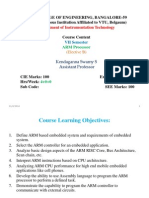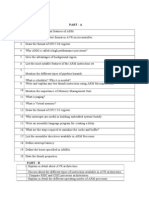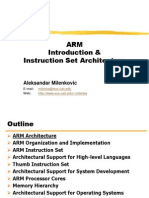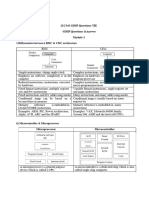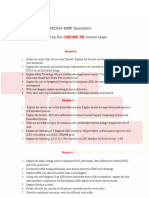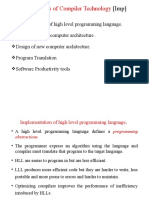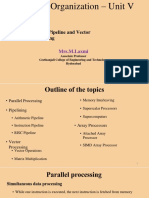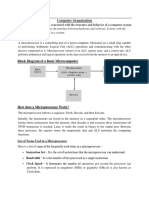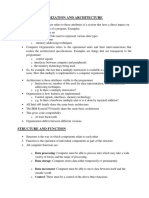0% found this document useful (0 votes)
31 views3 pagesMicrocontroller Question Bank
The document is a question bank for the Microcontrollers (BCS402) course at PES Institute of Technology and Management, covering topics such as ARM basics, instruction sets, C compilers, exception handling, and memory architecture. It includes detailed questions and tasks for each module, focusing on various aspects of ARM microcontrollers and programming in C. The document serves as a study guide for students in the Department of Computer Science & Engineering (Data Science).
Uploaded by
kavanaashwath18Copyright
© © All Rights Reserved
We take content rights seriously. If you suspect this is your content, claim it here.
Available Formats
Download as DOCX, PDF, TXT or read online on Scribd
0% found this document useful (0 votes)
31 views3 pagesMicrocontroller Question Bank
The document is a question bank for the Microcontrollers (BCS402) course at PES Institute of Technology and Management, covering topics such as ARM basics, instruction sets, C compilers, exception handling, and memory architecture. It includes detailed questions and tasks for each module, focusing on various aspects of ARM microcontrollers and programming in C. The document serves as a study guide for students in the Department of Computer Science & Engineering (Data Science).
Uploaded by
kavanaashwath18Copyright
© © All Rights Reserved
We take content rights seriously. If you suspect this is your content, claim it here.
Available Formats
Download as DOCX, PDF, TXT or read online on Scribd
/ 3











